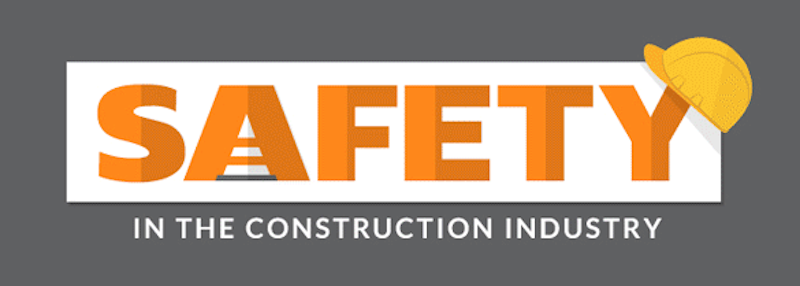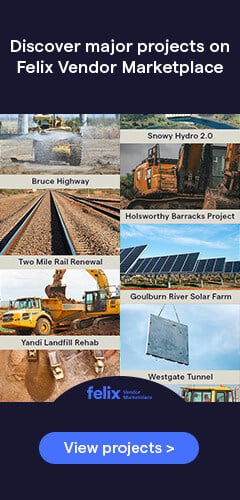Quick tips to enforce fall protection regulations on-site

Without a doubt, working in construction has increased hazards compared to other industries, making safety regulations an ever-topical discussion point among construction companies. This has never been more true than with employees working at heights. When working feet above ground, workers should comply with the fall protection regulations set by site managers as these rules will keep everyone safe from accidents and from falling off a high structure.
According to Safe Work Australia, falling from heights is one of the major causes of serious injury and death in Australian workplaces. Under risk management, each site should consider the different ways they will protect employees working with heights, also called fall protection. Fall protection is a system, equipment or tool being used in any industry involving work in high places, and this is set up to prevent injury and death caused by falling. It could include safety harnesses for suspension, safety nets to catch falling objects or people, and ladder rail systems to prevent ladders from tipping.
In the construction industry, non-compliance to safety regulations might be rare, but there are still some workers who opt to not follow all the rules - even experienced workers tend to do this. We have listed below five quick tips you can use to enforce compliance to fall protection regulations on-site.
Safety culture in the workplace
The safety of your team should be the top priority your construction company and rooted into the work culture you've built. Owners and senior management should lead by example - attitude, discipline and comprehensive regulations are the only way to ensure your employees don't trivialise safety management. Enforcing the use of fall protection equipment and tools should be done for the sake of the employees’ well-being and not just because OSHA requires it.
All employees should undergo hands-on training

Each employee should receive a thorough training on the company’s safety rules and regulations. Training should include hands-on drills and situational tasks as this will give the employees better insight of what might happen on site, as well as let them know how to properly fit and use fall protection equipment before they even start working on a project.
Know what motivates each worker in your company
Each person in your company may have different reasons as to why they comply to your company’s fall protection regulations, and knowing what motivates them to comply is an advantage. Some workers might be motivated to comply by the fear of death or injury while some might believe that accidents are a rare occasion and will not happen to them, encouraging leniency. Emphasise to everyone in the company that non-compliance to fall protection regulations could lead to wage loss, permanent physical disability if they are injured or could even lead to death at the worse. Sharing facts, personal experiences and known consequences will help enlighten them, at also encourage compliance with the set fall protection regulations in the workplace.
Provide your workers with comfortable and easy-to-use equipment or tools
Safety equipment can be like a pair of shoes – if it’s not comfortable to wear, you wouldn't wear them much. The simplest way to make workers comply with safety precautions, such as harnesses, is to provide one that is as comfortable as possible to wear while working. Also make sure the equipment and tools provided are easy to use and set-up as something incomprehensibly or excessively long to learn may demotivate workers. If your employees are happy with what they are using, it's more likely that they will comply with fall protection standards.
Set a ‘non-compliance will be penalised’ rule

Safety on-site is top priority and non-compliance to safety regulations should have well known repercussions. Incidents on a job site, injury or even the death of your employee will strongly affect your reputation, and incur monetary costs due to damages. Create and enforce a safety policy stating that anyone who does not comply will be sanctioned for disciplinary actions. These could include suspension due to non-compliance, sending the worker home for the day without pay, and dismissal from employment.
It's also important to have strong safety and compliance checklists before the start of construction to ensure that all the tools and equipment used are in good working condition to avoid any future risks. To help you with this step, we've prepared the downloadable Risk Assessment Checklist below to help you conduct a thorough safety check on-site so you can keep your workers safe from accidents.

Related Articles

Tips to overcome the Fatal 5 of construction sites
In one of our most recent posts, we delved into the Fatal 5 of construction injuries in Australia. In order to overcome or prevent fatal injuries on-site, certain precautionary measures have to be put in place to safeguard all workers’ safety on-site. Below are some recommendations to overcome the five most common fatal injuries on Australian construction sites.

Distracted operators and the toll on fleet managers
Civil construction relies on a range of heavy excavation and earthmoving equipment. Operator distraction is a significant danger to the safe operation of this equipment, leading to serious crash-related injuries, delays in work progress and damage to other plant and equipment on-site. As our dependency on technology increases, so does the temptation to participate in distracting activities. Unfortunately, modern construction sites present equipment operators with continuous opportunities for distraction as well.

The fatal five construction injuries in Australia
Each year there are hundreds of workplace accidents and dozens of workplace injury-related fatalities. The construction industry is an incredible dangerous one. And within the construction industry, there are five accident types that are particularly deadly. These have often been termed constructions 'fatal five'.
Get the latest project news
- updates on Australia's pipeline of state and federal projects
- fresh contract awards from major contractors and builders
If you're looking to contact us about other matters, please contact us.

